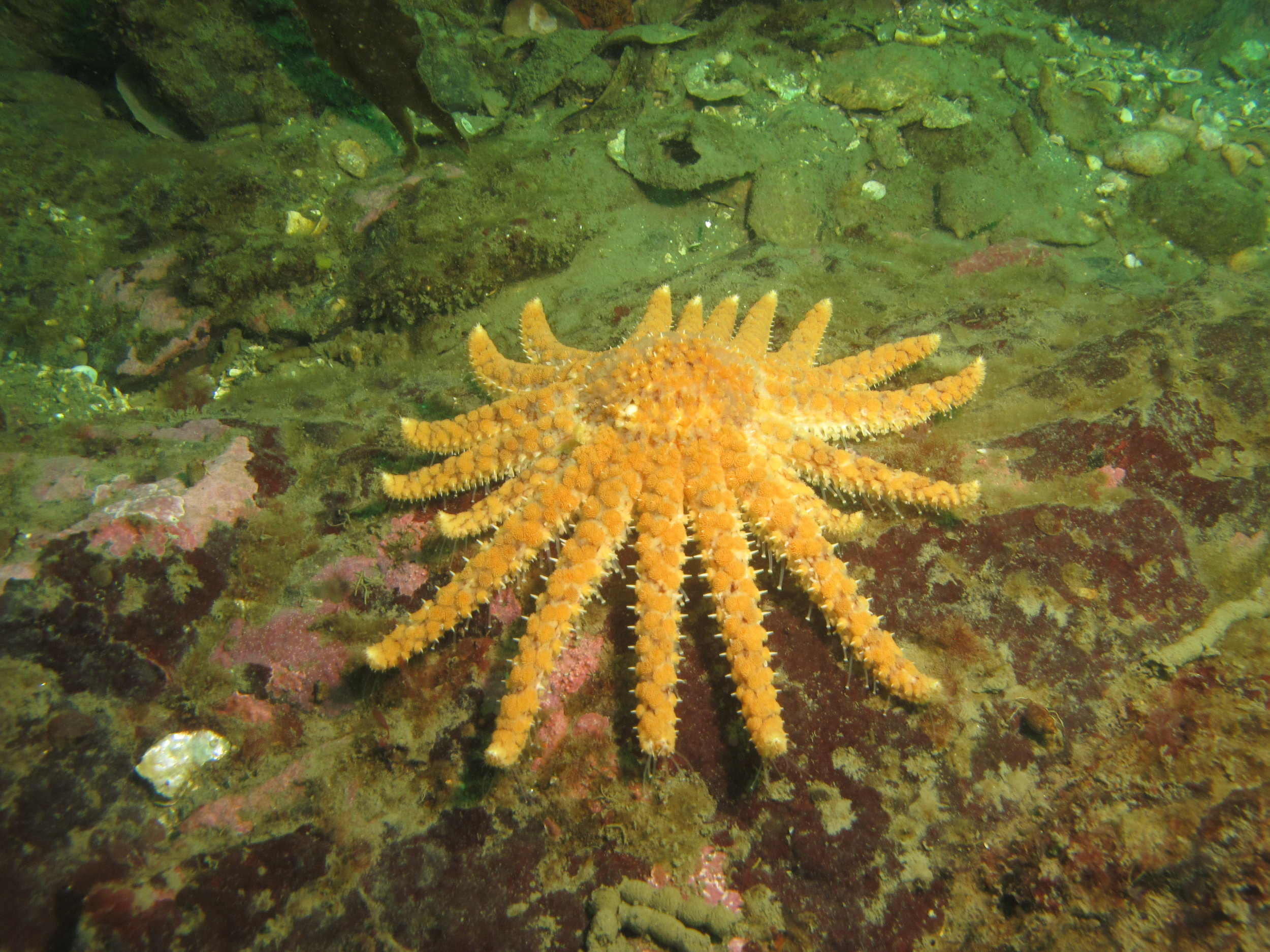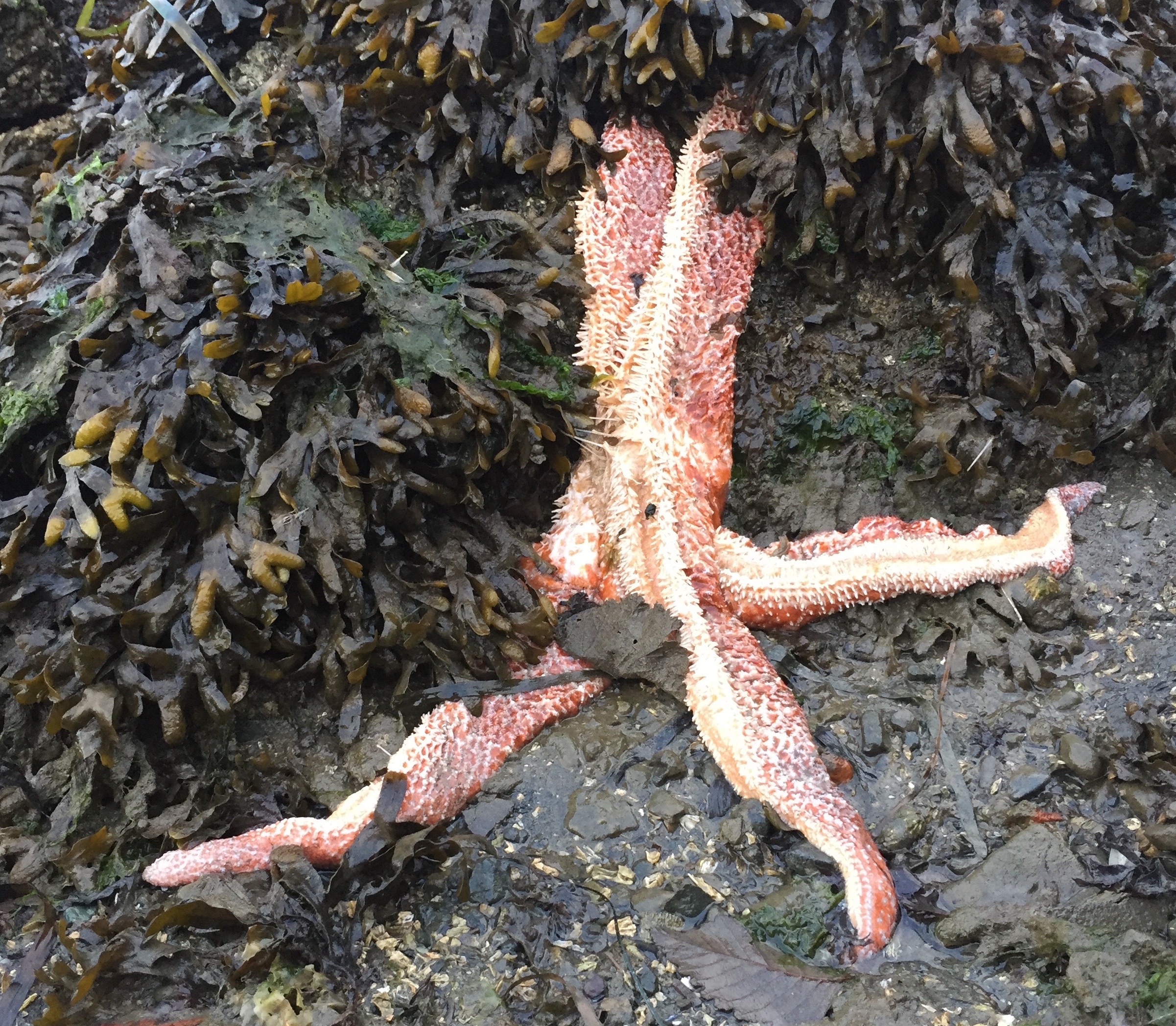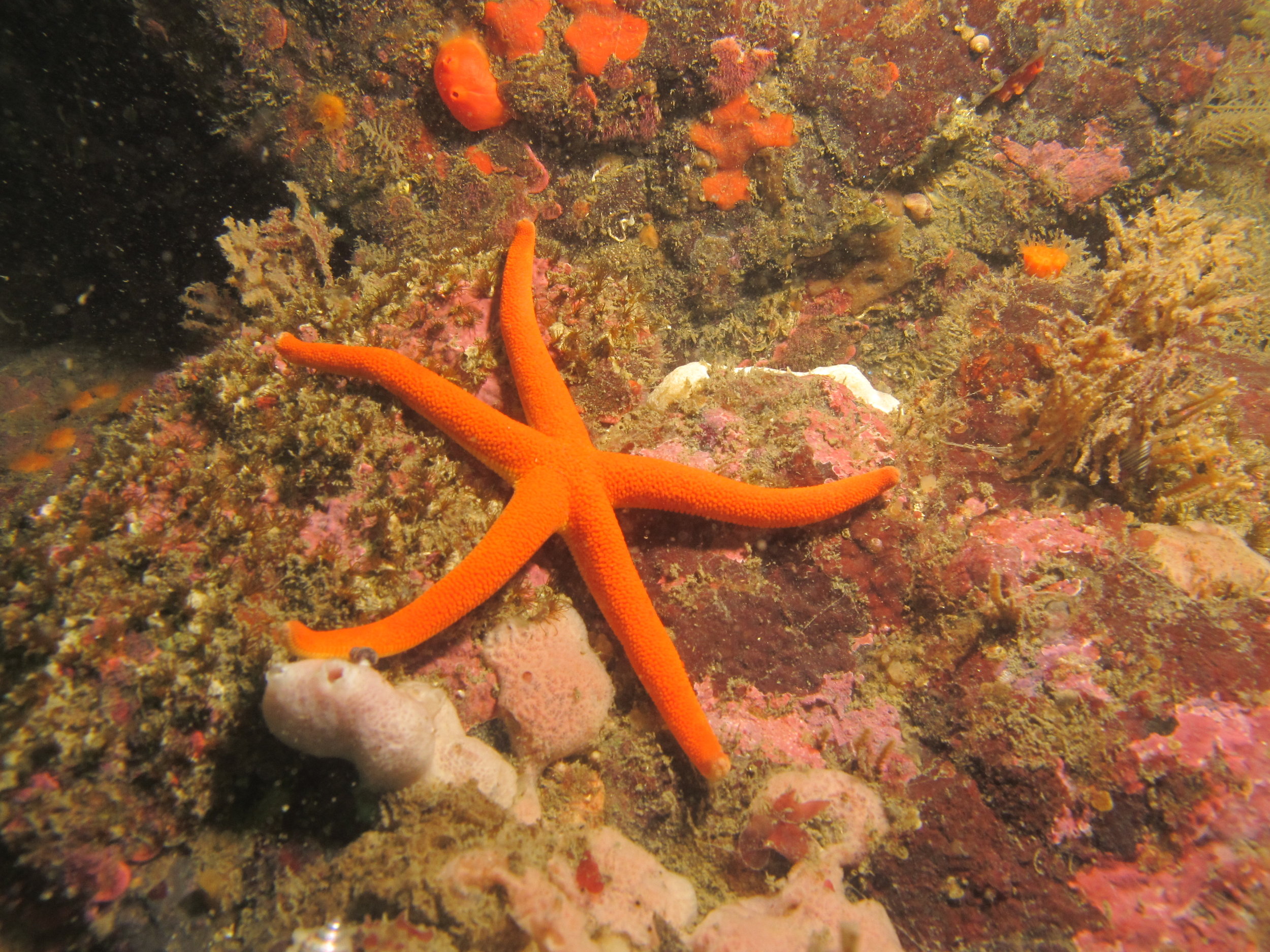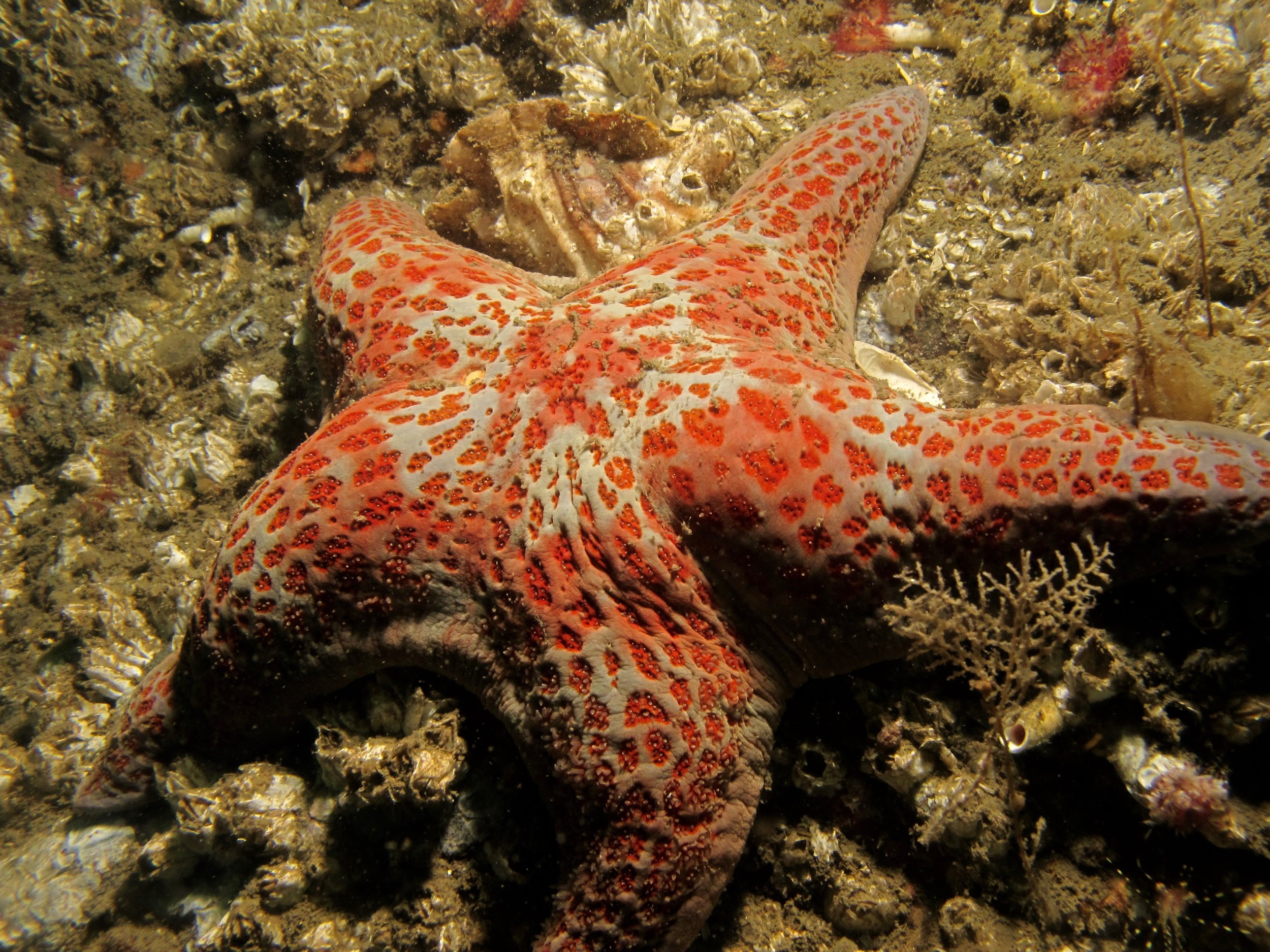The majority of our sea stars are predators, but the sunflower is a carnivore on a whole other level of dominance. Huge, relatively fast, and with three octopuses’ worth of hydraulic-powered arms, it’s the sucker-footed Starasaurus rex of the subtidal kingdom. While most marine life—as well as drysuited divers—steer well clear of sea urchins and their long, prickly spines, the sunflower stars gobble them like candy and then spit out the spiky bits. It’s the loss of such a voracious urchin-eater that’s particularly disturbing when we consider SSWD’s effects on our local ecosystem.
Herbivorous urchins graze on algae. A previous marine epidemic that killed off urchin populations in Florida and the Caribbean allowed algae to overgrow corals and severely damage tropical reefs. In our temperate waters, the concern is the reverse happening: with fewer sea star predators around, the urchin numbers can explode like underwater locusts and decimate the algae, mowing down our vital kelp forests, leaving behind what are known as urchin barrens.








